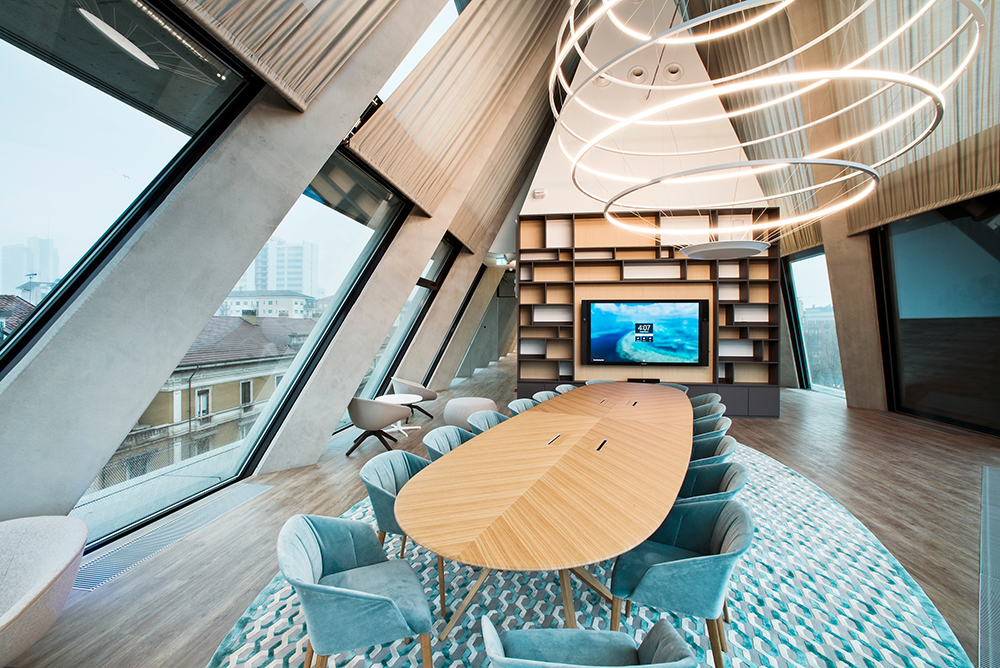
How to build your business on leadership, culture change and technology
The secret of productivity
Digital transformation and the positive impact that technology adoption is making to businesses of all sizes, can be seen all around us.
While there’s no doubt that moving data to the cloud, adopting Artificial Intelligence, and implementing remote working tools is helping businesses to scale and innovate like never before, the question on leaders’ minds is not if, but how, to digitally transform. Leaders must focus on how can technology empower their employees and drive growth.
To help businesses understand how to best empower their workforce, Microsoft spoke to more than 20,000 people working in medium and large companies, from a range of industries, in 21 different countries across Europe. Respondents were asked about the technology they use at work, and their attitudes towards their job and their job performance.
The findings clearly show that to compete in today’s cloud-first world, quality tools alone aren’t enough: for technology to be most effective, it needs to sit within a strong digital culture.
Culture is your competitive edge
A digital culture refers to an environment where business leaders champion technology as critical in helping the company thrive, and where the use of these tools is encouraged, supported and organically adopted. In other words, a company with a strong digital culture encourages the use and support of technology to get work done in the most effective way possible.
Across Europe, we saw that companies with a strong digital culture are likely to outperform the less well-equipped competition, given they have:
- 5 x more employees who feel empowered;
- 4 x more employees who feel engaged;
- 3 x more employees who feel innovative;
- 2 x more employees who feel productive
It should be no surprise, then, to see that the survey reveals that businesses which combine a strong digital culture with an overall positive culture, see the greatest gains from adopting and using new technology.
The research also highlights a very interesting fact – the introduction of new technology on its own, does not guarantee more effective work.
When a business equips workers with innovative technology and nurtures a strong digital culture, workers not only feel much more productive – and most of all, in the sense that they work smarter, not harder. Engagement goes up, too, i.e. the ability of employees to work in a ‘flow’ state. This is when you are able to bring total focus, energy, and passion to the task at hand. When you find your flow, you deliver better work with less effort. It’s a win-win.
A digital culture is about considering how work gets done, about how and where conversations happen, and how enabled and motivated employees feel.
Mark Dickinson, Chief People Officer at TalkTalk Telecom Group has seen a noticeable increase in employee productivity, in an environment:
“We’re trying to shift decision making and power away from the head office to the people who are closest to issues and best able to contribute. With Skype for Business Online, it’s easier to get the right people together quickly, without expensive travel. Where resourcing is concerned, this means we can hire the right skills more quickly and make more efficient use of our staff.”
Future-proof your business
It’s in every business leaders’ interest to nurture the process of innovation. This hinges on two key ingredients: collaboration and creativity.
To innovate, businesses must tap into people’s individual strengths. But there also needs to be space for experimentation, discussion and the cross-fertilization of ideas. The next break-through is usually the ongoing input of different people, from diverse teams and backgrounds, that helps turn an idea into an innovation.
When European employees were asked about workplace innovation, Microsoft looked specifically at how creative and collaborative they felt. Employees were asked about these two performance indicators specifically, as it is a company’s creative and collaborative employees who are best able to tackle key business challenges, identify new market opportunities and impact business outcomes.
Technology, then, works best when it marries seamlessly with a company’s unique culture. One such example is Stanley & Stella, a Belgium-based B2B apparel brand prioritizing sustainable fashion. Technology underpins every aspect of their operations, from helping teams in 100 countries collaborate seamlessly, communicate more effectively with both retailers and consumers to tracking each step in their supply chain.
Cultivate your talent
The survey also shows that employees feel highly empowered when working in a strong digital culture. This means being able to do their best work, having their voices heard, and feeling like they are able to make a real difference.
For the first time in history, today’s workplaces have as many as five different generations working alongside each other, and each generation brings unique values, perspectives and communication styles to the table.
Increasingly, people want to feel they are personally making an impact, and job titles and pay checks are no longer enough to attract and retain the brightest and the best. Technology can help unlock the full collective potential of employees and unify a company’s talents in such a way that individuals feel empowered and teams can work effectively together.
DEME Group – an international leader in environmental science and engineering – is an example of a company using technology to attract and retain top talent.
Equipping employees with Surface tablets, for example, has united the company, giving everyone the power and the portability they need to get the job done. “We have people who are working all over the world,” Johan continues, “So it’s important people have the right information, at the right moment in the right place.”
Change starts from the top
These ideal cultural changes which promote a healthy working environment and the use of technology, must come from the top down.
When implemented successfully, new technology in a healthy working environment pays enormous dividends, with employees feeling more vested and included in a company’s overall strategic direction.
The ability to solve problems in new ways, to spot emerging opportunities, and break down barriers while increasing collaboration will not only benefit every employee, but also improve a company as a whole.
These opportunities are there for the taking – from smaller and medium-sized business, to large corporations. Don’t just think of transformation as an IT exercise. Think about it as a people journey.
Read/download the full report below:
